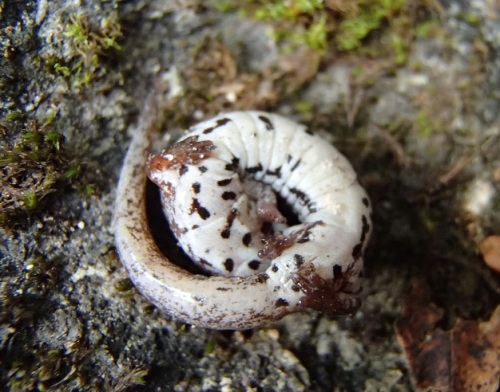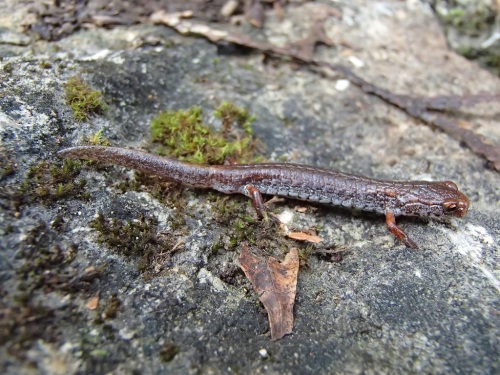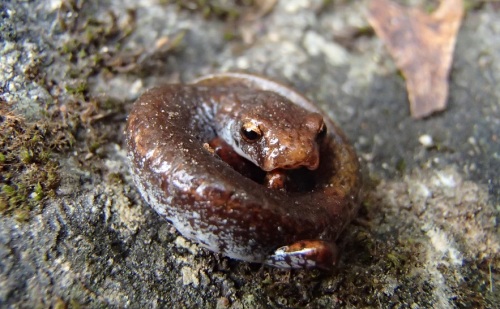Written by: Yves Scholten, Planning Ecologist
Have you ever seen a salamander? You probably have since they are everywhere. Well, maybe not everywhere, but they are common critters in our forests and wetlands. Since they are shy and prefer to hide in the dead leaves and rotting logs of our forest floors, they are mostly unseen. Salamanders are a significant link in the ecosystem. They prey on small worms, slugs, spiders, mites and insects, and then larger animals like birds, mammals and snakes prey on them. Many people are acquainted with the small Red-backed Salamander (Plethodon cinereus), a common species in healthy woodlands in Ontario. Conservation Halton ecologists were completely surprised, however, to find a very unusual kind of salamander in Halton in October.
It appears to be a Red-backed Salamander–until you look very closely. Its back has a scaly texture and its belly is as spotted as a Dalmatian: it certainly isn’t a Red-backed Salamander. This is a Four-toed Salamander (Hemidactylium scutatum). These small (usually less than 10 cm long) amphibians are part of a family of salamanders called Plethodontids. Plethodontids don’t have lungs! They breathe exclusively through their moist skin. This family of salamanders prefer wetlands that are boggy and mossy with sphagnum.
Ecologists don’t think Four-toed Salamanders are rare, but they are rarely seen. It’s difficult to observe Four-toed Salamanders because they live underground in burrows around the wetlands. In 1980 was the last time a Four-toed Salamander was identified in Halton and reported to the Ontario Herpetofaunal Survey. This is a rare find indeed.
“What a funny name for them”, you might think (especially if you already know that all salamanders have only four toes – on their front feet, at least). What sets this species apart is that they only have four toes on their hind feet as well, where most salamanders have five toes on each hind foot. Like other woodland salamanders, a Four-toed salamander drops its tail if it feels threatened (by a predator, for example), and regenerates a new one. The “broken” tail will keep twitching and squirming to distract the predator while the salamander escapes to safety. Biologists try not to scare them into dropping their tail, especially late in the season, since the tail is full of fat and nutrient stores that help the salamander get through the winter. Another defense Four-toed Salamanders have is to curl into a tight little doughnut when they feel threatened making themselves as little as possible.
Conservation Halton staff work to protect the habitats of these and other species of salamanders in this region, including the Endangered Jefferson’s Salamander (Ambystoma jeffersonianum).
If you observe reptiles and amphibians in Halton, you can report them to Conservation Halton or the Ontario Nature Reptile and Amphibian Atlas (they also have an app for your smart phone).



